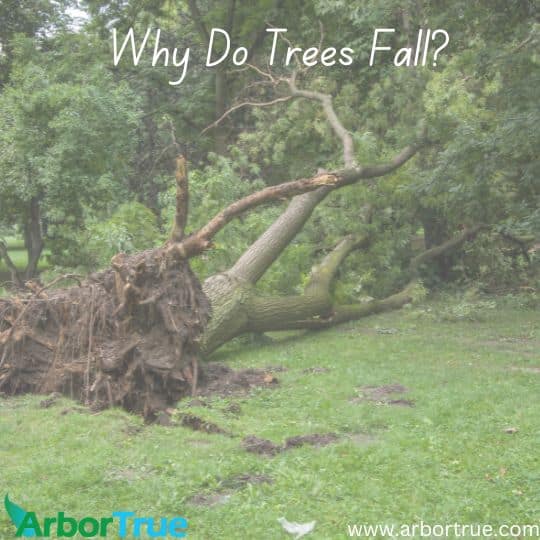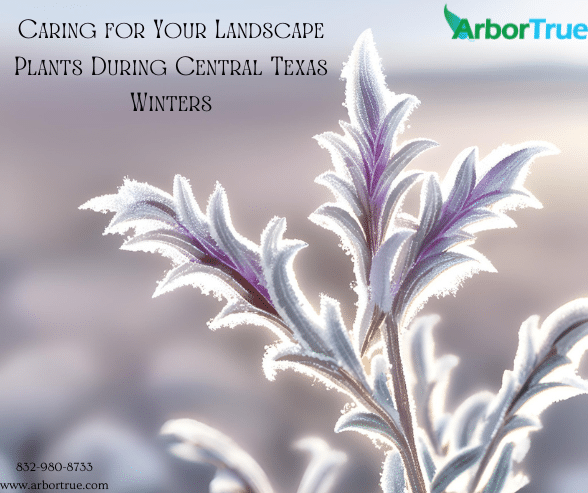
The First Cold Day
November 3, 2023
Three Ideas After the First Cold Front
November 8, 2023
Why Do Trees Fall?
We recently came across an article about a tree that has been around for at least four centuries falling over. There were a number of reasons why this unfortunately happened.
It got us thinking that many of you may wonder why trees fall. Maybe you have particular trees you are concerned about or maybe you’ve just wondered how something so seemingly steady as a tree could fall over.
There are a number of reasons why trees fall, and it often is a combination of factors. There may be one thing that finally caused the fall, but there were more likely a number of things that led up to that moment.
Wet ground
Wet ground, when combined with other factors, can cause a tree to fall. If the ground is sufficiently wet in a quick enough period of time, and the tree has other issues, the tree can fall. This could happen, for example, when there is root rot and the roots of the tree are not able to hold it in place when the ground gets wet quickly.
Root rot
Root rot can also cause a tree to fall. Although it is more complex, there can be thought of as being two kinds of root rot: visible and non-visible. The non-visible kind, root rot under the soil, is something that an expert can identify. Visible root rot, rot of roots that are visible above ground, started out as invisible root rot and developed over time. Visible root rot is a sign that the tree is in decline.
One sign of root rot is something called fungal conks. Fungal cocks are mushrooms that look like steps up a tree. They start underground and take time to develop.
One thing you might not know, is that most of a mushroom’s mass is unseen under the soil. The part that we see, the part that looks like a mushroom, is the fruit of the fungus. It is sort of like an apple on an apple tree. The apple is like the mushroom you see, and the rest of the tree is like the part you don’t. One thing this means is that if you see mushrooms, they took time to develop and conditions were right for them to develop. If you see fungal conks, it is a sign of root rot and you should contact an arborist for help.
Wind
Wind is something we think of as knocking over trees. While heavy gusts of wind or wind in tornadoes or hurricanes can certainly knock over a healthy tree if the conditions are right, more likely, if a tree falls over in the wind, it is from a pre-existing condition. There was something else about the tree that allowed it to fall in the wind.
Death
You know, it is sometimes hard to think about trees dying. They seem so permanent. We hear about trees that are hundreds of years old, like the one in the article. It is easy to sort of think of a tree as never dying, or at least, certainly not dying in our lifetimes.
This isn’t really the case though. Trees, like everything else, do eventually die. While some trees can certainly live a long time, there are many trees that have shorter lifespans. Trees go through a life cycle of birth, growth, maturity, and death, just like people. Sometimes when a tree falls, it is because the tree died or was near death simply due to age.
Apart from age, and sudden events of different kinds, a tree can also die if it goes through the stages of stress, leading to decline, leading to death. A number of factors can stress a tree, and if they continue and are exasperated by other factors they can lead to the death of a tree.
An arborist can identify causes of stress to a tree. If a tree is in decline, they can tell how long this has been happening by looking at something called internodal spacing. An arborist can look at the spacing between nodes on a tree and see how much the tree has grown each year, going back three or five years. They can tell if growth has been slowing and by how much. They can use this information to help determine if the tree is in decline. If the tree is in decline, with help it could recover, but this takes time.
Rule of Thumb
A rule of thumb when it comes to a tree falling is that it generally takes three factors for a tree to fall. For example, if a tree experienced an extended period of drought, and had some form of stress, and was impacted by a pathogen, these three factors together could cause the tree to be susceptible to falling.
What Can You Do?
We all care about trees. Having a tree fall can be an emotional experience. It can also cause property damage and could hurt someone if it fell under the wrong conditions. Knowing if a tree is susceptible to falling is complicated and the evaluation is best left to a professional arborist.
One thing you can do though, is observe your trees. Note their condition. Note anything that you think might be impacting them. Note how they have changed over time.
We recommend having an arborist examine your trees once per year. If you notice anything in your observations, we recommend contacting an arborist to check the situation out.




